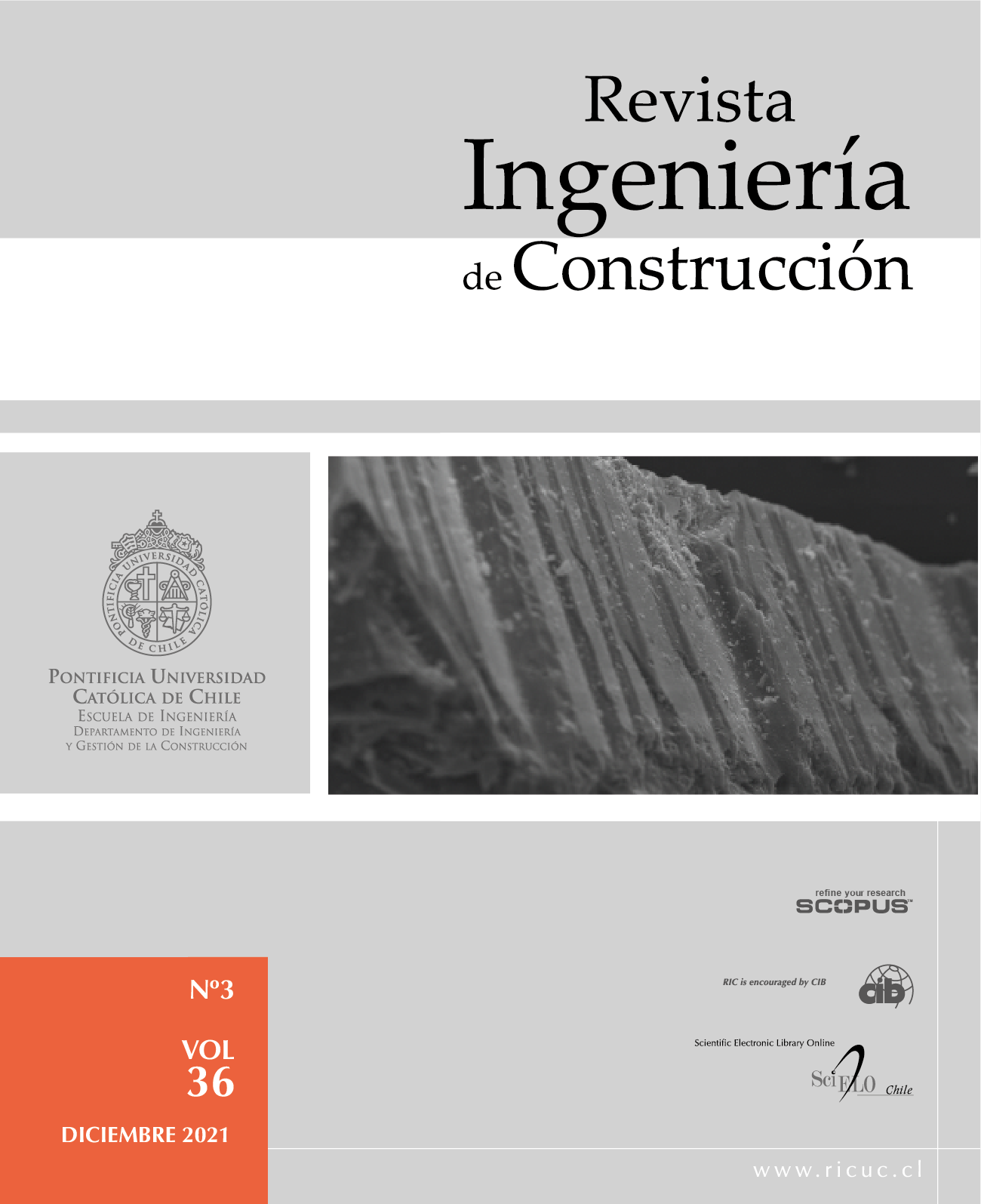Comparative study of the tensile bond strength of rendering mortars in ceramic and concrete structural blocks
DOI:
https://doi.org/10.7764/ric.00002.21Keywords:
Rendering mortar, Tensile bond strength, Masonry wallsAbstract
The tensile bond strength is one of the main properties of rendering mortars. It represents the adhesiveness ability between the mortar itself and the substrate. This property depends on several factors, such as the proportion and characteristics of the mortar materials and the substrate, along with the mode of application and climate conditions. The purpose of this paper was to analyze the tensile bond strength between three rendering mortar proportions in volume – 1: 1: 6, 1: 2: 9, and 1: 6 (with plasticizer additive) – each one applied on two substrates, ceramic structural blocks with roughcast and concrete structural blocks. The rendering mortars had their physical properties evaluated in fresh and hardened stages, as well as their compressive and tensile strengths in flexure. The tensile bond strength was determined by a pullout test on ceramic and concrete masonry walls exposed to external weather. The results showed that the 1: 1: 6 mixed mortar exhibited higher tensile bond strength in both substrates of ceramic blocks with roughcast and concrete blocks without preparation. Besides, among 1: 2: 9 and 1: 6 mortars there is no significant difference in tensile bond strength considering both substrates. Another conclusion was that the substrate type did not affect the final bond strength between the mortarss.


